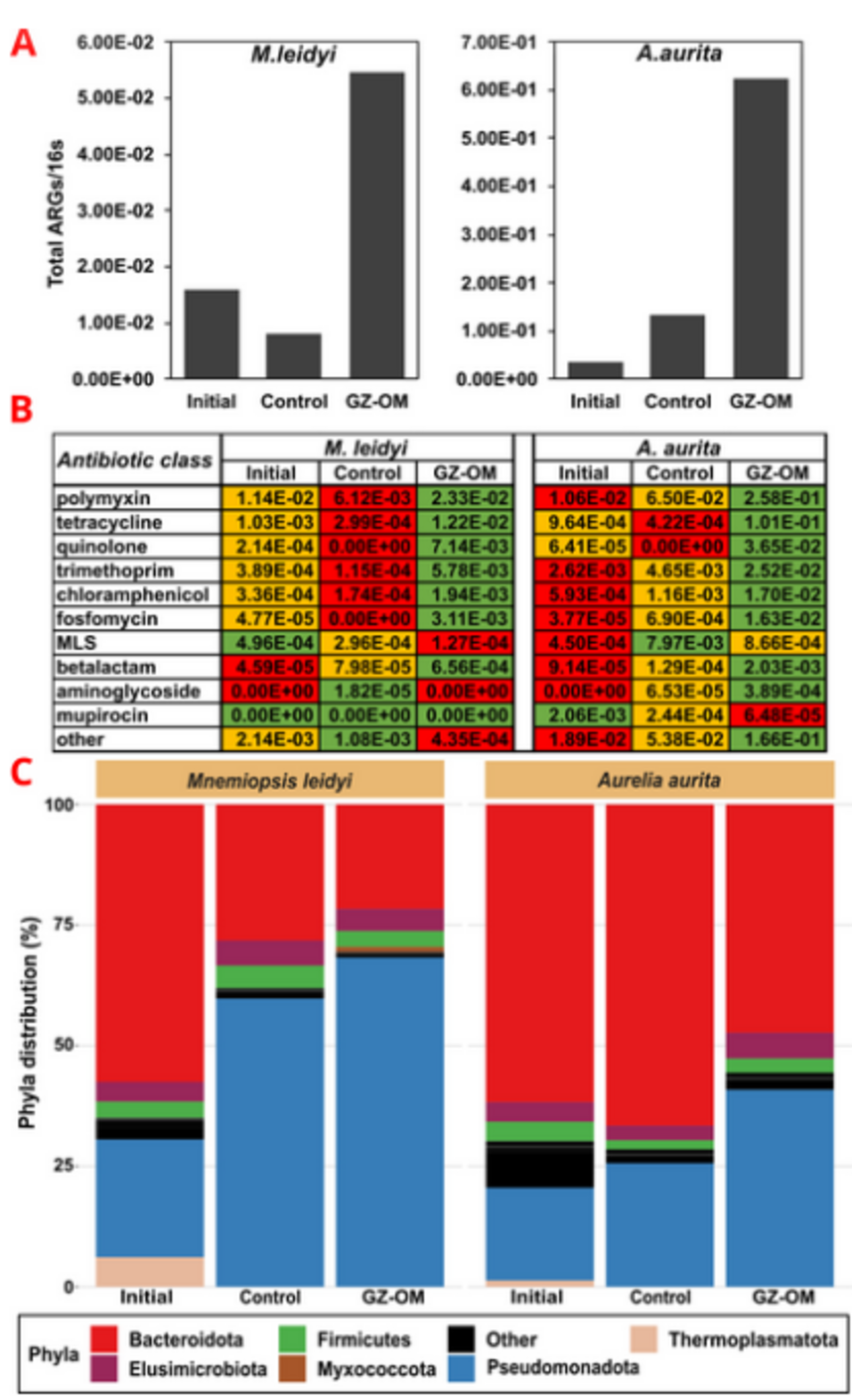Gelatinous zooplankton (GZ) represents an important component of marine food webs, capable of generating massive blooms with severe environmental impact. When these blooms collapse, considerable amounts of organic matter (GZ-OM) either sink to the seafloor or can be introduced into the ocean’s interior, promoting bacterial growth and providing a colonizable surface for microbial interactions. We hypothesized that GZ-OM is an overlooked marine hotspot for transmitting antimicrobial resistance genes (ARGs). To test this, we first re-analyzed metagenomes from two previous studies that experimentally evolved marine microbial communities in the presence and absence of OM from Aurelia aurita and Mnemiopsis leidyi recovered from bloom events and thereafter performed additional time-resolved GZ-OM degradation experiments to improve sample size and statistical power of our analysis. We analyzed these communities for composition, ARG, and mobile genetic element (MGE) content. Communities exposed to GZ-OM displayed up to fourfold increased relative ARG and up to 10-fold increased MGE abundance per 16S rRNA gene copy compared to the controls. This pattern was consistent across ARG and MGE classes and independent of the GZ species, indicating that nutrient influx and colonizable surfaces drive these changes. Potential ARG carriers included genera containing potential pathogens raising concerns of ARG transfer to pathogenic strains. Vibrio was pinpointed as a key player associated with elevated ARGs and MGEs. Whole-genome sequencing of a Vibrio isolate revealed the genetic capability for ARG mobilization and transfer. This study establishes the first link between two emerging issues of marine coastal zones, jellyfish blooms and ARG spread, both likely increasing with future ocean change. Hence, jellyfish blooms are a quintessential “One Health” issue where decreasing environmental health directly impacts human health.
Further reading: doi.org/10.1128/msystems.01012-24

